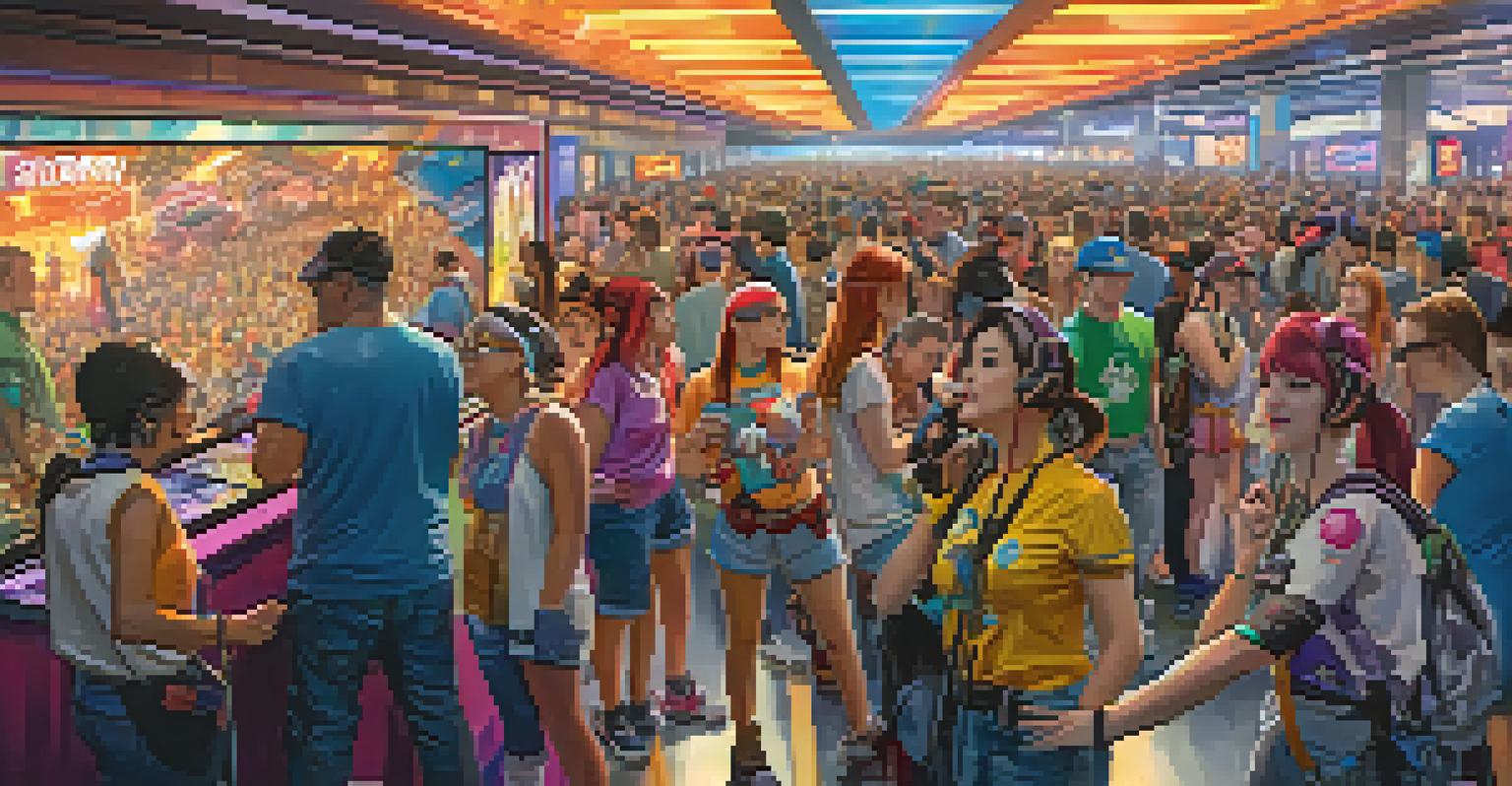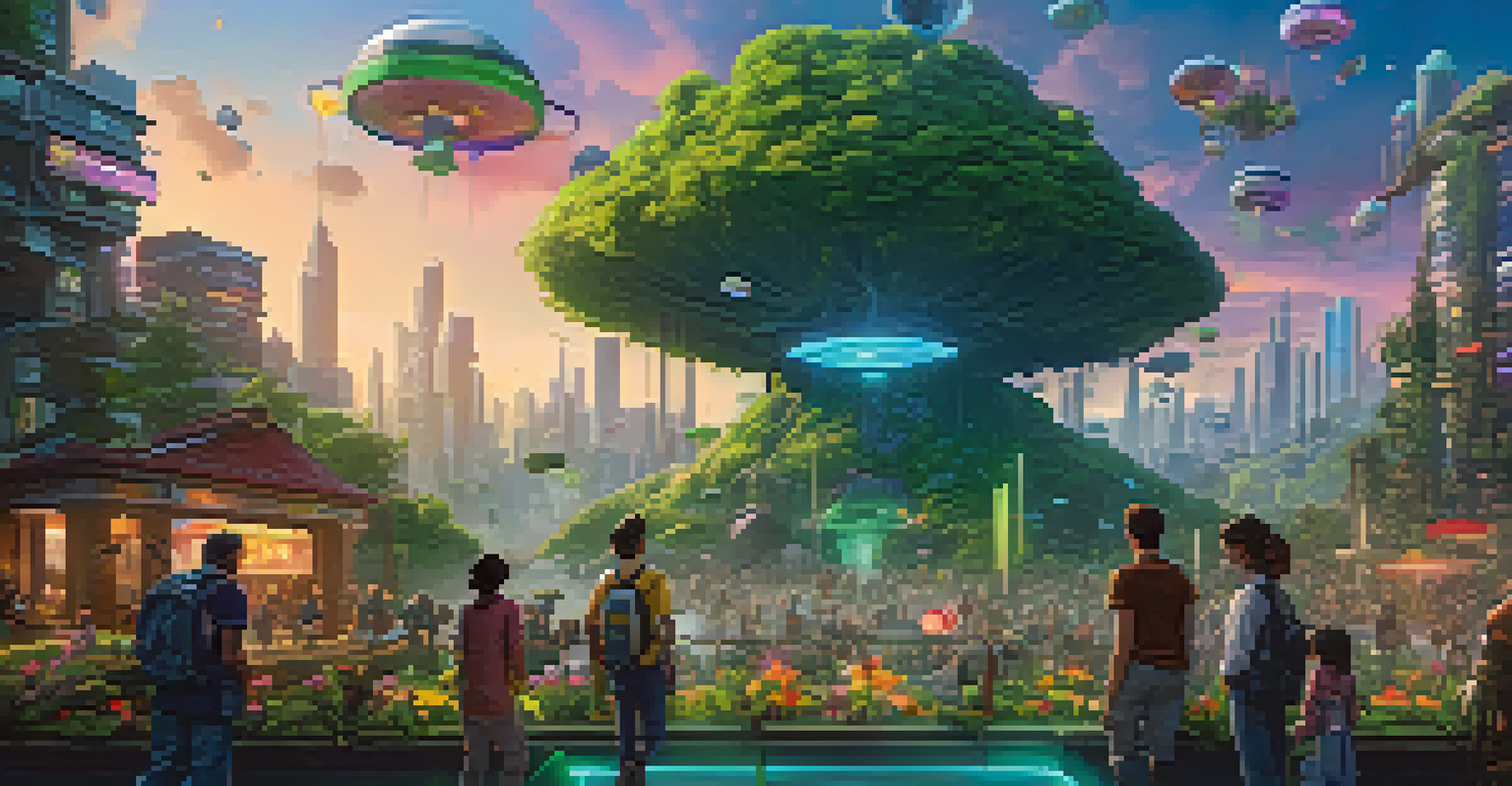Cultural Impact: How Video Game Films Influence Popular Media

The Rise of Video Game Adaptations in Cinema
Over the past two decades, films adapted from video games have surged in popularity. What was once a niche market has blossomed into a significant genre, attracting both gamers and moviegoers alike. This trend is fueled by the growing recognition of video games as a valid storytelling medium, which has inspired filmmakers to explore this rich narrative potential.
Video games are an art form, and films can enhance that art by bringing these stories to a larger audience.
Franchises like 'Resident Evil' and 'Tomb Raider' have paved the way, showcasing how cinematic adaptations can transport beloved characters and stories to the big screen. The success of these films often hinges on their ability to resonate with the original fanbase while appealing to new audiences. As a result, we see a blend of action, adventure, and nostalgia that captivates viewers.
Moreover, the increase in interest has led to larger budgets and better production quality. This shift not only enhances the visuals but also allows for deeper storytelling, making these adaptations more engaging. The evolution of technology has played a crucial role in bringing the fantastical elements of video games to life in ways that were previously unimaginable.
Cross-Pollination Between Gaming and Film
The relationship between video games and films is increasingly symbiotic, with each medium influencing the other. Game developers often draw inspiration from cinematic techniques, such as storytelling methods and character development, enhancing the gaming experience. Conversely, filmmakers are now borrowing elements from video games, including interactive storytelling and immersive worlds.

This cross-pollination results in innovative content that captivates diverse audiences. For instance, games like 'The Last of Us' have inspired series adaptations that stay true to the source material while exploring new narrative angles. This fluid exchange not only enriches both mediums but also creates a more cohesive cultural landscape.
Video Game Films Gain Popularity
The rise of video game adaptations reflects their growing recognition as valid storytelling mediums, attracting diverse audiences.
As a result, audiences can enjoy a richer narrative experience, whether they are playing a game or watching a film. This integration fosters a deeper appreciation for both storytelling forms, allowing fans to engage with their favorite franchises on multiple levels. In essence, the lines between gaming and film continue to blur, leading to exciting new possibilities.
Cultural Representation in Video Game Films
Video game films have the power to shape cultural representation and diversity in media. As these films increasingly reflect the demographics of their gaming audiences, they can challenge stereotypes and promote inclusivity. Characters from various backgrounds are now being portrayed more authentically, allowing for a richer connection with viewers.
Nostalgia is a powerful force; it can draw audiences in and create connections that transcend generations.
For example, movies like 'Detective Pikachu' and 'Sonic the Hedgehog' showcase a diverse cast that appeals to wider audiences. This shift not only validates diverse identities but also encourages other media to follow suit, resulting in more inclusive storytelling across the board. As representation improves, audiences feel seen and valued, fostering a sense of belonging.
Moreover, these films often serve as a gateway for discussions about cultural identity. They provide an opportunity for fans to engage with narratives that resonate with their experiences. This cultural dialogue can lead to greater understanding and appreciation among different communities, ultimately enriching the media landscape.
Impact on Fashion and Merchandise Trends
The influence of video game films extends beyond the screen, significantly impacting fashion and merchandise trends. As characters and stories gain popularity, their style often translates into real-world fashion, influencing fans' clothing choices. From graphic tees to cosplay, fans are eager to express their love for their favorite franchises through their attire.
Merchandise also sees a significant boost, with collectibles, action figures, and themed gear flying off the shelves. This demand often leads to collaborations between brands and franchises, creating exclusive products that fans can't resist. The excitement surrounding these items can drive trends and even influence broader fashion statements.
Nostalgia Enhances Audience Engagement
Nostalgia plays a key role in the success of video game films, driving emotional connections and repeat viewings among fans.
This intersection of film, fashion, and merchandise not only reflects the popularity of video game films but also creates a vibrant community of fans. Enthusiasts share their styles and collectibles online, fostering connections and conversations around their favorite franchises. In this way, video game films are not just a source of entertainment but also a catalyst for cultural expression.
The Role of Nostalgia in Audience Engagement
Nostalgia plays a crucial role in the success of video game films, tapping into the emotional connections audiences have with the original games. For many viewers, these films are a chance to relive cherished memories from their gaming experiences. This emotional engagement can drive ticket sales and encourage repeat viewings, as fans are eager to share the experience with others.
Films like 'Mortal Kombat' and 'Super Mario Bros.' capitalize on this nostalgia by bringing beloved characters and storylines to life. The familiarity of these franchises creates a sense of comfort, making audiences more inclined to embrace the cinematic adaptations. Nostalgia not only enhances enjoyment but also fosters loyalty among fans.
Moreover, this nostalgic appeal often leads to renewed interest in the original games. When audiences revisit these titles, they may discover new aspects they hadn't appreciated before. This cyclical relationship ensures that both the films and the original games continue to thrive in popular culture.
Challenges of Adapting Video Games to Film
Adapting video games into films is not without its challenges. One of the biggest hurdles is capturing the essence of the game while ensuring that the film stands on its own. Game narratives often involve complex plots and character development that can be difficult to translate into a two-hour format, leading to concerns about oversimplification.
Additionally, fans have high expectations, often comparing adaptations to the source material. Striking the right balance between staying true to the original game and appealing to a broader audience can be a daunting task. When filmmakers get it wrong, they risk alienating both gamers and casual viewers, resulting in backlash.
Cultural Representation Matters
Video game films are increasingly reflecting diverse demographics, promoting inclusivity and challenging stereotypes in media.
Despite these challenges, successful adaptations can pave the way for future projects. They set a standard for what audiences can expect and inspire confidence in new adaptations. With each successful film, the potential for quality storytelling in this genre increases, encouraging filmmakers to take on the challenge.
The Future of Video Game Films and Their Impact
Looking ahead, the future of video game films appears promising, with numerous adaptations in the works. As the industry continues to evolve, we can expect to see even more innovative storytelling and production techniques that push the boundaries of what these films can achieve. With the continuing rise of streaming platforms, there are more opportunities for long-form adaptations that can explore narratives in greater depth.
Furthermore, as audiences become more diverse, there is an opportunity for films to reflect a wider array of experiences and cultures. This inclusivity can lead to richer storytelling and help break down barriers within the industry. As filmmakers embrace this diversity, we may see an exciting array of narratives that resonate with a broader audience.

Ultimately, the cultural impact of video game films will continue to grow, influencing not just cinema but also how stories are told across various media. As long as these adaptations remain grounded in the essence of the games they represent, they have the potential to captivate and inspire future generations of fans.